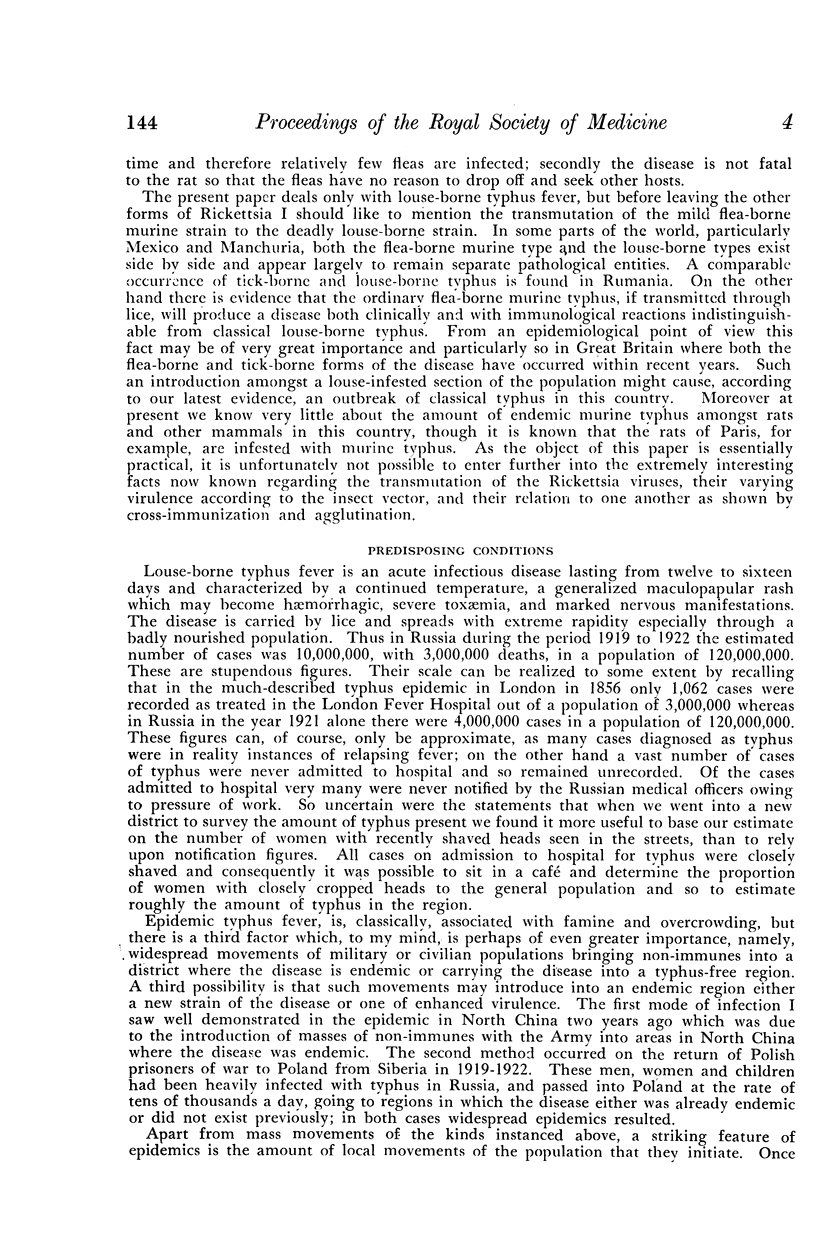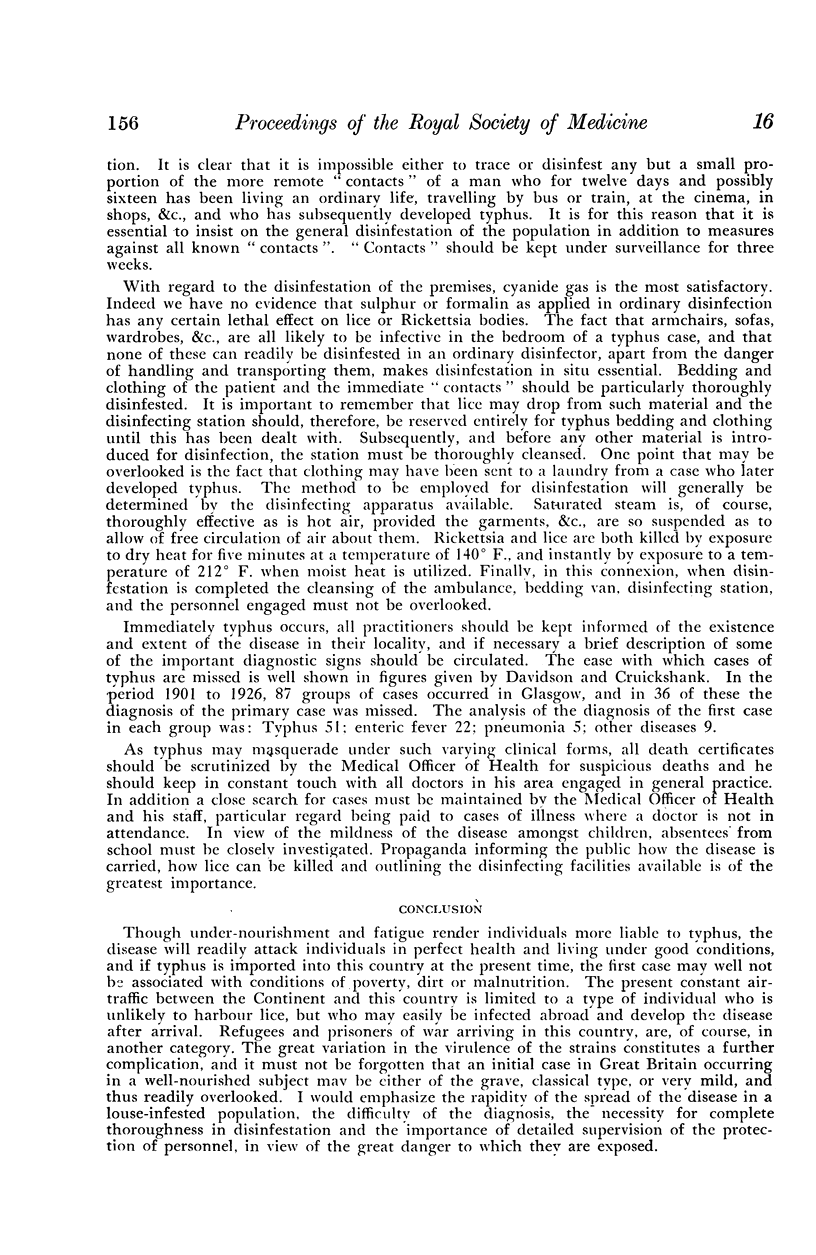Abstract
This paper deals with some aspects of the control of louse-borne typhus fever. The epidemic form is associated with famine and overcrowding. In producing an epidemic in a hitherto endemic area malnutrition is of greater importance than over-crowding; another factor which brings this about is widespread movement of civil or military population thus bringing non-immunes into a district where typhus is endemic.
Endemic typhus usually occurs in the early months of the year, whilst the epidemic form may appear at any time. Conditions under which epidemic typhus occurs favour the outbreak of other diseases so that an uncomplicated case is rarely seen.
Louse-borne typhus fever lasts from twelve to sixteen days. The incubation period is usually twelve to fourteen days, though it may be from five to twenty-one days. The onset is sudden, but is often preceded by malaise and a rise of temperature. Two common initial symptoms are acute frontal or occipital headache and bronchitis. The first sign may be mental confusion or delirium. Acute delirium is usually present after the first week.
Full text
PDF


















